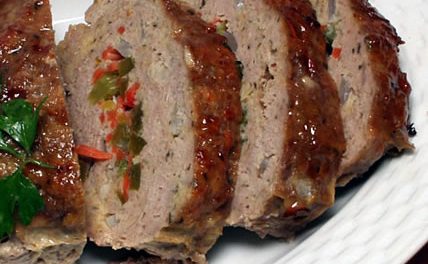Xylitol is a sugar alcohol. Sugar alcohols are sweeteners that produce a smaller rise in blood glucose levels than other carbohydrates. Other sugar alcohols include erythritol, hydrogenated starch hydrolysates, isomalt, lactitol, maltitol, mannitol, and sorbitol.
Xylitol also provides added benefits that other sweeteners do not. Xylitol is lower in calories than sugar and is shown not to raise blood sugar levels or cause hyperglycemia. In addition, Xylitol has the added benefit of promoting oral health. Diabetics are at an increased risk of oral health issues, such as thrush and candidiasis (which can be fatal). Xylitol, and xylitol-containing products, may assist in the prevention and management of these health issues.
Control of blood glucose, lipids and weight are three major goals of diabetes management. Xylitol is slowly absorbed -- so when xylitol is used, the rise in blood glucose and insulin response associated with the ingestion of glucose is significantly reduced. The reduced caloric value (2.4 calories per gram versus 4.0 for sugar) of xylitol is consistent with the objective of weight control. Xylitol is considered a diabetic-friendly alternative to other sugars.
Xylitol is approved in more than 35 countries, its sweetness and bulk make it an increasingly popular ingredient in foods, pharmaceuticals and oral health products.
Xylitol Facts
- Useful as an alternative to sugar for people with diabetes
- Shown to not increase blood sugar levels
- Good taste with no unpleasant aftertaste
- Helps reduce the development of dental caries
- Reduces plaque formation
- Increases salivary flow to aid in the repair of damaged tooth enamel
- Provides one-third fewer calories than sugar - about 2.4 calories per gram
- Toxic to dogs - never give dogs any products that contain xylitol
Nutritional Information for Xylitol
Per 4-gram Serving:
- Calories: 10
Fat: 0
Cholesterol: 0
Sodium: 0
Carbohydrate: 0
Fiber: 0
Protein: 0
History of Xylitol
Discovered by German chemist Emil Fischer in 1891, xylitol has been used as a sweetening agent in human food since the 1960s. Xylitol is a white crystalline powder that is odorless, with a pleasant, sweet taste. It is gaining increasing acceptance as an alternative sweetener due to its role in reducing the development of dental caries (cavities).
Xylitol occurs naturally in many fruits and vegetables and is even produced by the human body during normal metabolism. Produced commercially from plants such as birch and other hard wood trees and fibrous vegetation, xylitol has the same sweetness and bulk as sucrose with one-third fewer calories and no unpleasant aftertaste. It quickly dissolves and produces a cooling sensation in the mouth.
Xylitol is currently approved for use in foods, pharmaceuticals and oral health products in more than 35 countries. Xylitol is used in foods such as chewing gum, gum drops and hard candy, and in pharmaceuticals and oral health products such as throat lozenges, cough syrups, children's chewable multivitamins, toothpastes and mouthwashes. In the United States, xylitol is approved as a direct food additive for use in foods for special dietary uses.
Dental and Oral Health Benefits of Xylitol
- Reduces Cavities
In clinical and field tests, the consumption of xylitol between meals was associated with significantly reduced new caries formation (cavities), even when participants were already practicing good oral hygiene. Results clearly establish that use of xylitol sweetened foods provides additional help in the battle against tooth decay. It also inhibits the growth of S. mutans, the primary bacterium associated with dental caries. The usefulness of polyols, including xylitol, as alternatives to sugars and as part of a comprehensive program including proper dental hygiene has been recognized by the American Dental Association. The FDA has approved the use of a "does not promote tooth decay" health claim in labeling for sugar-free foods that contain xylitol or other polyols.
In a two-year study conducted at the Ylivieska Health Center in Finland, children aged 11-12 who consumed 7 to 10g of xylitol daily in chewing gum showed a 30 to 60% reduction in new dental caries development compared to the control group not chewing gum.
The possible long-term caries-preventing effects of xylitol have been studied as a follow-up to the Ylivieska study. Re-examination of the subjects 2 or 3 years after discontinuation of the use of xylitol revealed a continued reduction in caries increment in the post-use years of about 55%. In teeth erupting during the first year of the use of xylitol chewing gum, the long-term caries preventative effect was over 70%. The results suggest that the value of xylitol may be highest during periods of high dental activity such as eruption of new teeth.
A 40-month (1989-93) cohort study on the relationship between the use of chewing gum and dental caries was performed with 4th grade students in Belize, Central America. Nine treatment groups were included: control group (no gum); four xylitol groups (range of xylitol consumption 4.3-9.0g/day); two xylitol/sorbitol groups (total polyol consumption 8.0/9.7g/day); one sorbitol group (9.0g/day); and one sucrose group (9.0g/day). Compared with the no-gum group, sucrose gum usage resulted in a marginal increase in caries rate (relative risk 1.20). Sorbitol gum reduced the caries rate (relative risk 0.74). The four xylitol gums were most effective in reducing caries rates (relative risks from 0.48-0.27). The most effective gum was a 100% xylitol pellet gum (relative risk 0.27). The xylitol/sorbitol gums were less effective than xylitol, but reduced the caries rates significantly compared to the no-gum or sorbitol gum groups. The results suggest that systemic usage of polyol-based chewing gum reduces caries rates in young subjects, with xylitol gums being most effective.
A three-year clinical dentifrice caries study was conducted with 2,630 children initially aged 8-10 years in the San Jose, Costa Rica metropolitan area. The study evaluated the efficacy of a 0.243% sodium fluoride/silica/10% xylitol dentifrice when compared to a 0.243% sodium fluoride/silica dentifrice which contained no xylitol. After the three-year period, subjects using the xylitol-containing dentifrice had a statistically significant reduction in decayed and filled dental surfaces (12.3% reduction; P<0.001). The study supports earlier work which suggests that xylitol and fluoride act synergistically to increase the efficacy of oral hygiene products.
- Reduces Plaque Growth
Recent studies at the Dental Schools of Michigan and Indiana Universities have tested the effect of xylitol/sorbitol blends in chewing gum and mints on plaque. They showed a significant decrease in plaque accumulation.
- Stimulates Salivary Flow
The sweetness and pleasant cooling effect of xylitol-sweetened products (such as mints and chewing gum) create an increase in salivary flow. Saliva helps with cleaning and protecting teeth from decay.
In 1986, the Federation of American Societies for Experimental Biology (FASEB) was commissioned by the U.S. Food and Drug Administration (FDA) to review all relevant data concerning xylitol and other polyols. The FASEB report's scientific conclusions indicate that the use of xylitol in humans is safe. The report also affirms xylitol's acceptability as an approved food additive for use in foods for special dietary uses.
In 1996, the Joint Expert Committee on Food Additives (JECFA), a prestigious scientific advisory body to the World Health Organization and the Food and Agricultural Organization of the United Nations, confirmed that adverse findings in animal studies conducted in the 1970s are "not relevant to the toxicological evaluation of these substances (e.g., xylitol) in humans."
JECFA has allocated an Acceptable Daily Intake (ADI) of "not specified" for xylitol. ADI, expressed in terms of body weight, is the amount of a food additive that can be taken daily in the diet over a lifetime without risk.
An ADI of "not specified" is the safest category in which JECFA can place a food additive. The Scientific Committee for Food of the European Union (EU) also determined xylitol "acceptable" for dietary uses.
Warning for Dog Owners about Xylitol
Similar to other foods such as chocolate, grapes and raisins, xylitol is safe for people but NOT safe for dogs. As little as 2-3 sticks of xylitol-containing gum can be toxic to a dog. Within 30-minutes of consuming xylitol, dogs may suffer a severe drop in blood sugar, vomiting, lethargy and seizures.
Sources
- Bär, A., Xylitol. In: Alternative Sweeteners, L. O'Brien Nabors & R.C. Gelardi eds., Marcel Dekker, Inc., N.Y., 1991.
- Brunzell, John D., Use of fructose, xylitol, or sorbitol as a sweetener in diabetes mellitus. Diabetes Care, Vol. 1, No. 4, July-August 1978.
- Isokangas, P.; Alanen, P.; Tiekso, J.; Makinen, K.K ., Xylitol chewing gum in caries prevention. A field study in children at caries-active ages. J Am Dent Assoc, 117:315-20, 1988.
- Isokangas, P.; Alanen, P.; Tiekso, J.; Makinen, K.K . Long-term effect of xylitol chewing gum on dental caries. Community Dent. Oral Epidemia. 17:200, 1989.
- Life Sciences Research Office, 1986. Health aspects of sugar alcohols and lactose. Report prepared for the Center for Food Safety and Applied Nutrition, Food and Drug Administration, Washington, D.C., under contract No. FDA 223-83-2020 by LSRO, Federation of American Societies for Experimental Biology (FASEB), Bethesda, Md.
- Makinen, K. K.; Bennett, C.A.; Hujoel, P. P.; Isokangas, P. J.; Isotupa, K. P.; Pape, Jr., H. R.; Makinen, P. L. Xylitol chewing gums and caries rates: A 40-month study. J. Dent Res 74(12): 1904-1913, December 1995.
- Office of the Federal Register, General Services Administration, 1995. Code of Federal Regulations. Title 21. S. 172.395. Washington, D.C., U.S. Government Printing Office.
- Official Journal of European Communities (1990) 0 276.40.
- Park, K.; Schemehorn, B.; Bolton, J.; Stookey, G.; Comparative effects of sorbitol and xylitol mints on plaque acidogenicity. Paper presented at the 69th General Session of the International Association for Dental Research, 1991.
- Sintes, J.L.; Escalante, C.; Stewart, B.; McCool, J. J.; Garcia, L,; Volpe, A.R.; Triol, C. Enhanced anticaries efficacy of a 0.243% sodium fluoride/10% xylitol/silica dentifrice: 3-year clinical results. American J of Dent, 8(5), 231-235, October 1995.
- Soderling, E.; Makinen, K.K.; Chen, C-Y; Pape, Jr., H.R.; Makinen, P-L: Effect of sorbitol, xylitol and xylitol/sorbitol chewing gums on dental plaque. Journal of Dental Research, Vol. 67, Special Issue, Abstract 1334, 1988.
- Tufts University School of Dental Medicine: Dry Mouth, 1986.
- JECFA, Evaluation of certain food additives and contaminants, Twenty-seventh Report of the Joint FAO/WHO Expert Committee on Food Additives, Geneva, WHO Technical Report Series No. 696, 1983.
- JECFA, Forty-sixth meeting, Summary and Conclusions, Geneva, Switzerland, February 6-15, 1996.
- Calorie Control Council.
0








